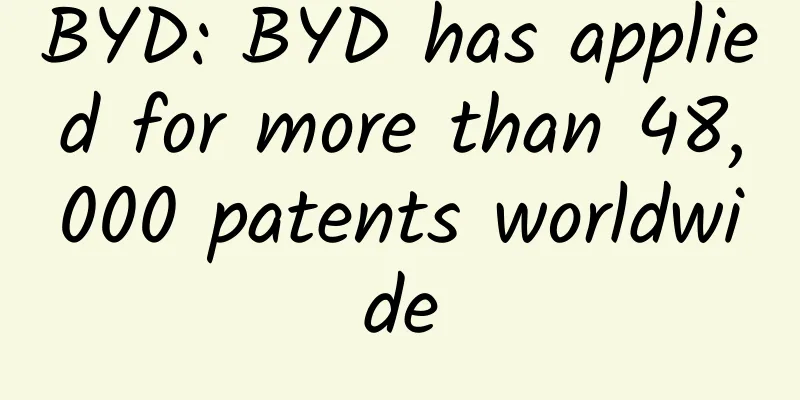When one type of pasta falls from grace, another type of pasta rises

|
Steamed buns, noodles, pancakes... Bread, cake, pizza... What's your favorite of these delicacies made with wheat flour as the main ingredient? From individual grains of wheat to snow-white and delicate flour, how is wheat served on the table? Harvest Season From late June to early September every year, the winter wheat and spring wheat sown across the country gradually enter the maturity stage after going through the growth stages of heading and flowering. At this time, the wheat grains gradually acquire the size and color of normal varieties, and the internal moisture content gradually decreases to below 20%, which is the best time to harvest. Golden wheat fields ready to be harvested In my country's early days, the level of agricultural mechanization was not high, and wheat harvesting mainly relied on manpower, so it was a very tiring job. Now, the popularity of harvesters has greatly improved labor efficiency. Large tracts of wheat fields can be harvested in a short time and then dried and stored in time. Large-scale harvesting site (see watermark for image source) Wheat grains to be sorted after harvest The wheat grains after harvest are hard and mixed with a lot of wheat leaves, straw, stones, weeds and other debris. But it doesn't matter, the transformation of wheat is about to begin! Fine selection, fine screening When the newly harvested wheat is sent to the flour mill, it first needs to go through a series of screening processes to remove various impurities. The screening process is a purely physical process, which screens different objects according to their different physical properties. The vibrating screening machine is equipped with screens with meshes of different sizes, which can remove large and small debris from the wheat grains. This takes advantage of the different sizes of the wheat grains and debris. The process of using a vibrating screen to remove various debris (Image source: Bilibili) The destoner can remove stones that are close in size to wheat grains, which takes advantage of the different qualities of wheat grains and stones. The magnetic separator can remove magnetic substances from wheat grains, which takes advantage of the non-magnetic nature of wheat grains. Working principle of magnetic separator (Source: nmi-jpn.com) The thresher can crush and remove impurities and insect eggs attached to wheat grains through physical collision, which takes advantage of the different hardness of impurities such as wheat grains and insect eggs, etc. Multiple grinding, skin-core separation After removing impurities, the wheat grains are washed and moistened with water, and then the subsequent grinding process can begin. A grain of wheat is mainly composed of three parts: bran (seed coat + pericarp + endosperm), endosperm and embryo. The endosperm accounts for about 80% of the mass of the entire wheat grain and is the main raw material for flour. Cleaned wheat grains (left) and the internal structure of wheat grains (right) After the wheat is tempered, the cortex of the wheat grain absorbs water and swells, becoming more tough and gradually separated from the endosperm. The subsequent flour-making process can crush the wheat grains through physical grinding, and then separate the three structures of bran, endosperm and embryo. In order to fully scrape the endosperm attached to the bran, large flour mills generally install many grinding, screening and water flow equipment with different functions, such as roller mills, skin mills, slag mills, core mills, high square sieves, bran beaters, powder purifiers, powder loosening machines, etc. Brief Principle of Flour Milling Process After repeated grinding and screening by these equipment, you can get snow-white flour! Finished flour products Flour grade and gluten strength The main components of finished wheat flour are starch, protein, fat, water, minerals and a small amount of vitamins and enzymes, among which the first two are the main components. Although different flours sold on the market look the same, the ingredients they contain actually vary greatly, so they can be divided into different categories accordingly. According to the different processing precision, my country divides wheat flour into four categories: special first-class flour, special second-class flour, standard flour and ordinary flour. Processing accuracy means that the precision of different flour-making equipment is different, so the content of impurities in the flour produced is also different, which will affect the evaluation indicators of the flour such as color and moisture content. At the same time, for flour-making raw materials, the closer the endosperm is to the center of the wheat grain, the purer it is, and the flour produced from this raw material will contain less bran impurities. Different grades of flour (Source: JD.com) Wheat flour can also be divided into three categories according to its protein content: high-gluten flour, medium-gluten flour and low-gluten flour. Common flour contains four types of proteins: gliadin, glutenin, globulin and albumin. The first two are insoluble in water and are also called gluten proteins. Gluten protein is a high molecular weight substance, composed of many long chains of amino acids. When we add water to the dough, the gluten protein absorbs water and expands, sticks to each other, and finally forms an overall spatial network structure, thus providing sufficient viscosity and elasticity for the dough. The higher the protein content, the stickier and elastic the flour will be. Scanning electron micrograph of protein in flour (Source: Reference [3]) Generally speaking, flour with a protein content between 9.5% and 12% is called all-purpose wheat flour or all-purpose flour. This type of flour is the most widely used in daily life. It is needed to make Chinese steamed buns, dumplings, noodles and other pasta. All-purpose flour (left) and steamed buns made with all-purpose flour (right) The protein content of high-gluten flour is higher than 12.5%. It has good toughness and elasticity, and therefore has a strong ability to maintain its shape. It is suitable for Western bread, pizza, pasta, Chinese fried dough sticks and other pasta. High-gluten flour (left) and bread made with high-gluten flour (right) The protein content of low-gluten flour is less than 8.5%. Due to its weaker gluten strength, it has a soft and smooth taste and is mainly used to make various soft pastries such as cakes. Cake flour (left) and cake made with cake flour (right) There is also a kind of flour that contains no protein at all, which is called gluten-free flour (or clarified flour, wheat starch). This flour is mainly used to make foods such as Cantonese rice rolls and crystal shrimp dumplings, and has a transparent texture. Gluten-free flour (left) and rice noodle rolls made with gluten-free flour (right) How to adjust the gluten strength of flour at home? According to the above-mentioned principle of flour gluten strength, we can adjust the gluten strength of flour by controlling the protein content in flour or controlling the formation of the protein spatial network structure. The specific methods are as follows: 1. Add raw materials We can control the gluten strength of flour by changing the raw material composition. For example, adding eggs to flour can increase the gluten protein content and improve the gluten strength; while adding starch can reduce the gluten protein content and reduce the gluten strength. 2. Control water temperature Appropriately increasing the water temperature (around 30°C) can promote the penetration of water into protein molecules, thereby increasing the amount and speed of gluten structure formation, thus having the effect of increasing gluten; while using boiling water to knead dough, part of the gluten protein will denature and no longer participate in the formation of gluten structure, thus having the effect of reducing gluten. 3. Add salt When adding some salt when kneading the dough, the sodium ions and chloride ions that dissociate in water can adsorb onto the protein molecules, thereby increasing the hydration capacity of gluten protein and playing a role in strengthening the gluten. 4. Add oil and sugar Adding oil or sugar when kneading dough can hinder the water absorption process of gluten protein, thus playing a role in reducing gluten. Among them, the gluten-reducing effect of sugar is weaker than that of oil. 5. Stir and knead thoroughly When mixing the flour and kneading the dough, the gluten protein can slide relatively, thus promoting the formation of gluten. However, excessive kneading will cause a large number of chemical bonds in the gluten protein to break, which will cause the gluten strength to decrease. The birth of flour is the transformation of wheat, and the production of various pasta is the transformation of flour, which is inseparable from the hard work and wisdom of the working people. And we can save food and not waste it, which is the greatest respect for this sweat! References [1] Liu Zhongdong (ed.); Wang An'na, Li Yonghong (eds.). Flour quality improvement technology and application[M]. Beijing: China Light Industry Press. 2005. [2] Wang Hui, ed. Wheat and Flour[M]. Chengdu: Southwest Jiaotong University Press. 2015. [3] An Zhaopeng, Wang Ran, Zhao Wenzhe, et al. Effects of wheat bran on dough and gluten protein properties[J]. Food Research and Development, 2018, 39(9): 11-17 [4] Pang Aiqing, Xu Yan. Microscopic analysis of muscle strength regulation[J]. Journal of Culinary Science of Yangzhou University, 2001(2). END Tadpole Musical Notation original article, please indicate the source when reprinting Editor/Xiao Xitushuo |
<<: Why do airplanes fly? The secret lies in their wings
>>: Why is the first photo sent back by the Webb telescope blurry?
Recommend
Eat radish in winter and ginger in summer! But do you really know how to eat it?
As the saying goes, "Eat radish in winter an...
Farewell forever! The space "Line Walker" Voyager 1 lost contact, where will it go in the end?
Voyager 1 has been traveling alone in deep space ...
Learn these 6 ways to play, and your Douyin account can also bring goods
As Douyin’s ability to sell goods continues to im...
Like! Primary school students appreciate flowers and make merit! If you see this plant, please call the police immediately
Recently, three primary school students in Ninggu...
List of currently closed communities in Shenyang in 2022: How many communities are closed now? Attached is the latest list!
Recently, new cases have appeared in Shanghai, Be...
5 ways to promote WeChat mini programs!
According to the latest data, the main entrances ...
A comprehensive analysis of Vatti: A win-win-win situation of “leveraging marketing” during the World Cup!
As early as the early morning of July 11, France ...
Why do some people play with their phones every day and still have good eyesight? (But I can’t)
Myopia is a problem. Once you forget to wear glas...
Tik Tok Promotion: How to Make Money Through Tik Tok?
1. How to make money from short videos on Douyin ...
It’s a difficult situation for Master Zhou. Is there any hope for Qihoo 360?
On May 6, there were a lot of press conferences i...
Review of the TV version of the beautiful big-screen adventure "Dodo Escape"
Screen: Sound Effects: operate: Plot: Experience:...
The latest list of sealed-off communities in Shenyang in 2022: Which specific communities need to be quarantined? Attached is the latest news!
Recently, new cases have appeared in some areas o...
The Chinese people's front teeth are like small shovels. Is it for eating better?
When I'm not eating, I always like to lick my...
Why is it that Changhong, which invests 2 billion yuan in R&D and 6 billion yuan in marketing expenses each year, always has no news about its products?
On the 25th, Sichuan Changhong, the former A-shar...
A small test of Qualcomm Snapdragon 602A
At an important position in the experience hall of...









